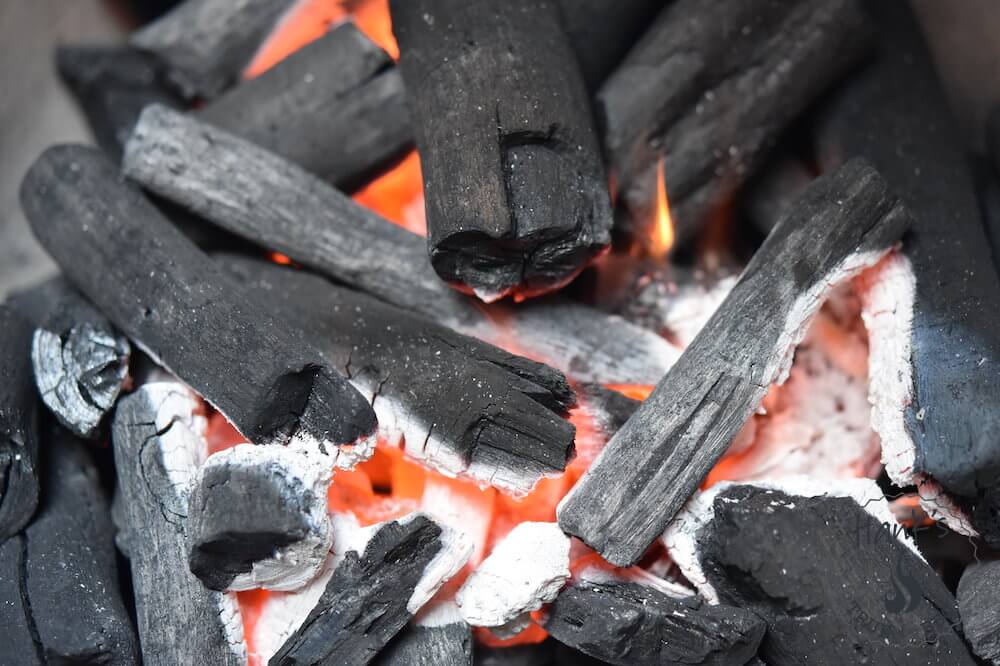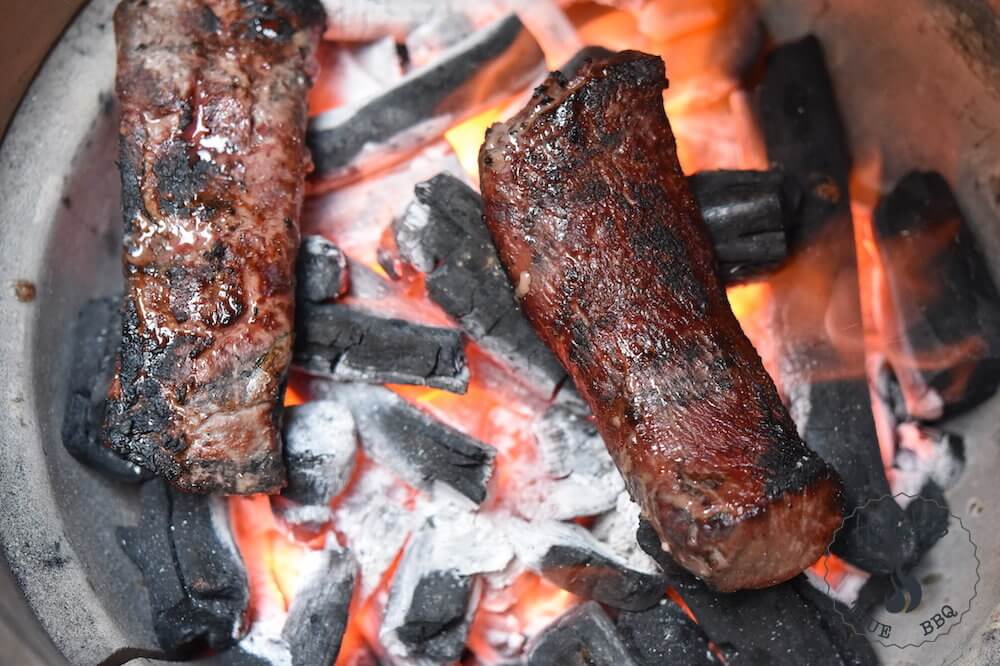Caveman grilling, or caveman style grilling, is a grilling techique where you work directly with the fire and the glowing embers.
Back to basics
Grilling caveman style means placing the food directly on or in the coal bed. That means you don’t have to clean the grill grates afterwards 🙂
The method has gotten its name from way back when you had nothing but an open fire to work with. This technique is still very common in South America among other countries/continents. I like the concept since it is ‘simple’, no expensive equipment needed.
Everything can be grilled
Fish, seafood, meat and greens lend themselves well to caveman grilling. Especially veggies, I would say. Many larger vegetables like cauliflower, rutabaga, red beets et.c. turn out delicious after spending an hour wrapped in foil in the glowing embers.
Fish and seafood
Fish typically cooks quickly, and the challenge is to avoid having it fall apart when moving it across the coal bed. I often use aluminum foil or parchment paper. Parchment paper has the added bonus that it looks nice when serving it on a platter when the paper is slightly burnt, while the fish is perfectly cooked inside. I tie it up with butcher’s yarn that has soaked in water.
Larger cuts of meat
Larger cuts need more time to becomed cooked all the way through. If you place them directly on the coal bed they get burnt on the outside, and are still raw in the middle. To cook these evenly you’re gonna have to cook them using indirect heat first, before placing them on the glowing embers. Indirect heat usually means elevating them a bit, using a stick and some rope/yarn to suspend them in air.
Temperature
It’s hard to adjust temperature in the glowing embers, but you can move the food around (sideways) to adjust temps. An option is to move the food vertically, by using some kind of device to suspend the food mid-air. Find/carve a thin tree branch and stick it into the ground at an angle. Now you can hang the food from it, suspended at the right height above the fire.
Fuel choice
Wood is always used in one form or another, either logs or charcoal. I don’t recommend briquettes, however. The main reason is that they produce a lot of ash, and the ash is almost sand-like, meaning it will stick to your food and looks less than appetizing. Choose a good quality charcoal instead.
As far as wood goes, most hardwoods are a good choice. Just like with smoking/bbq you want to steer clear of trees with sap, meaning pine and larch for example. They contain turpentine naturally, and you don’t want that in your food. Most other types of wood will work, but oak is the exception. When it burns it goes from burning logs straight to ash, effectively ‘bypassing’ the charcoal stage. That means it will ash all over your food just like briquettes.

Modus Operandi
The size of the coal bed is determined by how much food you plan on cooking. I usually build a 4 inch deep coal bed, so it lasts a while. You can build it thicker than that too. If you know you’re gonna be grilling for a while you’re gonna have to refill every now and then.
Light the coal bed in several places at the same time, and wait for the glowing embers to develop. Now it’s time to place the food directly in the fire. Place it there gently, and flip often. A common misconception is that the food is gonna be covered with ash and look unappetizing, but that’s not the case as long as you use a good fuel.

YouTube-videos
Here’s a video where I’m grilling some lamb backstrap, hopefully it can serve as inspiration:
And here’s a video when char-grilling a Butternut pumpkin:

